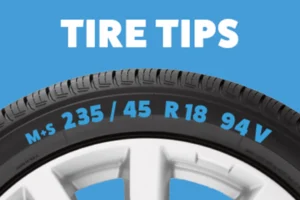Tire Load Index: What It Means
The tire load index is one of several very important metrics to keep in mind while you’re buying new tires along with the size and speed rating. This index can be hugely important if you’re one of the millions of Americans choosing to hitch a camper to your car or hoping to help a friend move. Knowing about load index will help prevent blowouts, damaged tires and potential accidents.
What is a tire load index?
This is a rating that indicates the load-carrying capacity of your tire at maximum air pressure. Basically, this number indicates whether your truck or vehicle can carry the weight it needs to. The higher the number, the greater the carrying capacity.
The number itself is not the weight it can carry; it’s an index, or a representative indicator, that describes the weight it can carry. You’ll want to use our handy tire load rating chart to figure it out.

Where can I find the tire load index on my tires?
Does the tire load rating matter?
Yes, knowing your proper tire load index can help prevent potential blowouts, structural damage and quickened wear-and-tear on your tires. This tire index is especially important for people hoping to haul equipment, trailers and more people. It’s important to remember that these ratings are for a fully inflated tire, rather than a poorly inflated one.
Those shopping for new tires should not consider buying a tire with a lower carrying capacity than what was factory installed (in other words, the original equipment). Also, you don’t want to just buy for the weight of the car itself but also the weight of the passengers, objects and hauled loads that you may be carrying.
What is the most common tire load range?
Your average commuter car or light truck will range from about 70 to 124 for load index; 117 is a pretty typical load rating for a car.
Tire Load Index Chart
Here, you can find most of the more common indexes in our tire load rating chart:
| Load Index | Load Capacity (lbs) |
| 70 | 739 lbs |
| 71 | 761 lbs |
| 72 | 783 lbs |
| 73 | 805 lbs |
| 74 | 827 lbs |
| 75 | 852 lbs |
| 76 | 882 lbs |
| 77 | 908 lbs |
| 78 | 937 lbs |
| 79 | 963 lbs |
| 80 | 992 lbs |
| 81 | 1019 lbs |
| 82 | 1047 lbs |
| 83 | 1074 lbs |
| 84 | 1102 lbs |
| 85 | 1135 lbs |
| 86 | 1168 lbs |
| 87 | 1201 lbs |
| 88 | 1235 lbs |
| 89 | 1279 lbs |
| 90 | 1323 lbs |
| 91 | 1356 lbs |
| 92 | 1389 lbs |
| 93 | 1433 lbs |
| 94 | 1477 lbs |
| 95 | 1521 lbs |
| 96 | 1565 lbs |
| 97 | 1609 lbs |
| 98 | 1653 lbs |
| 99 | 1709 lbs |
| 100 | 1764 lbs |
| 101 | 1819 lbs |
| 102 | 1874 lbs |
| 103 | 1929 lbs |
| 104 | 1984 lbs |
| 105 | 2039 lbs |
| 106 | 2094 lbs |
| 107 | 2149 lbs |
| 108 | 2205 lbs |
| 109 | 2271 lbs |
| 110 | 2337 lbs |
| 111 | 2403 lbs |
| 112 | 2469 lbs |
| 113 | 2535 lbs |
| 114 | 2601 lbs |
| 115 | 2679 lbs |
| 116 | 2756 lbs |
| 117 | 2833 lbs |
| 118 | 2910 lbs |
| 119 | 2998 lbs |
| 120 | 3086 lbs |
| 121 | 3197 lbs |
| 122 | 3307 lbs |
| 123 | 3417 lbs |
| 124 | 3527 lbs |
| 125 | 3638 lbs |
If you have a special tire situation for a large truck, connect with TIRE OUTLET to take a load off and have your questions answered! Schedule your appointment for brand new tires today!